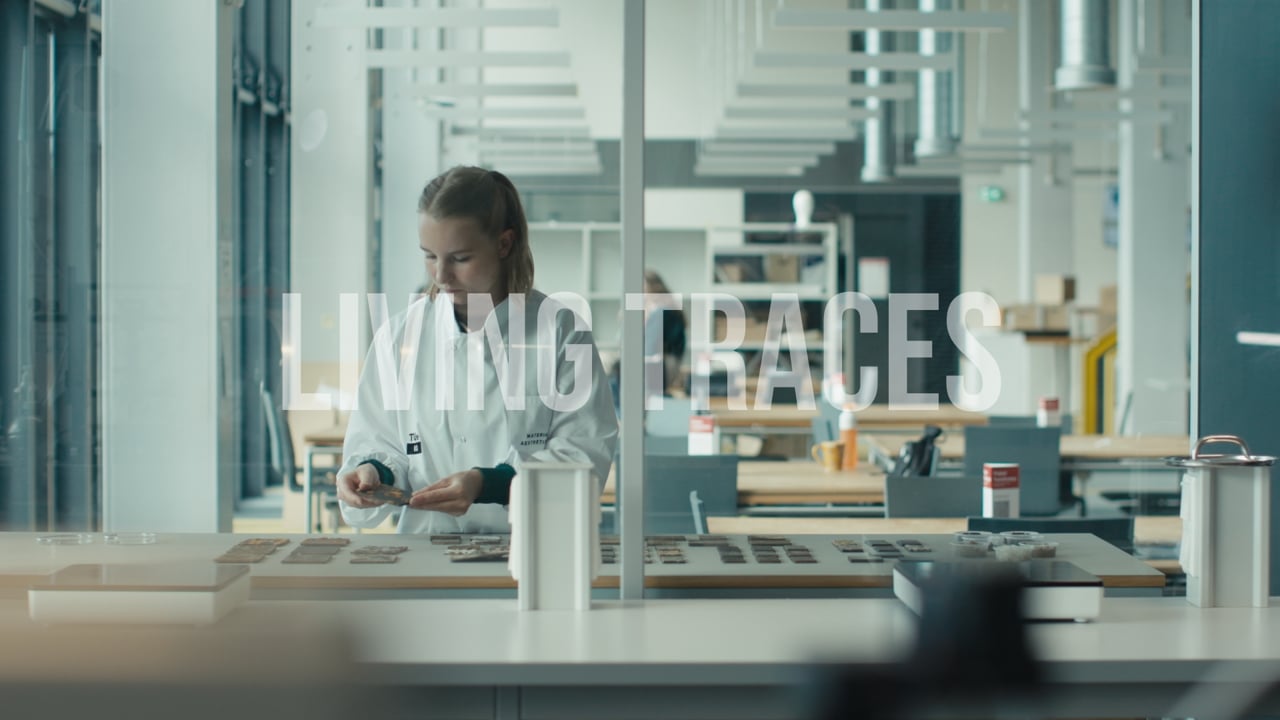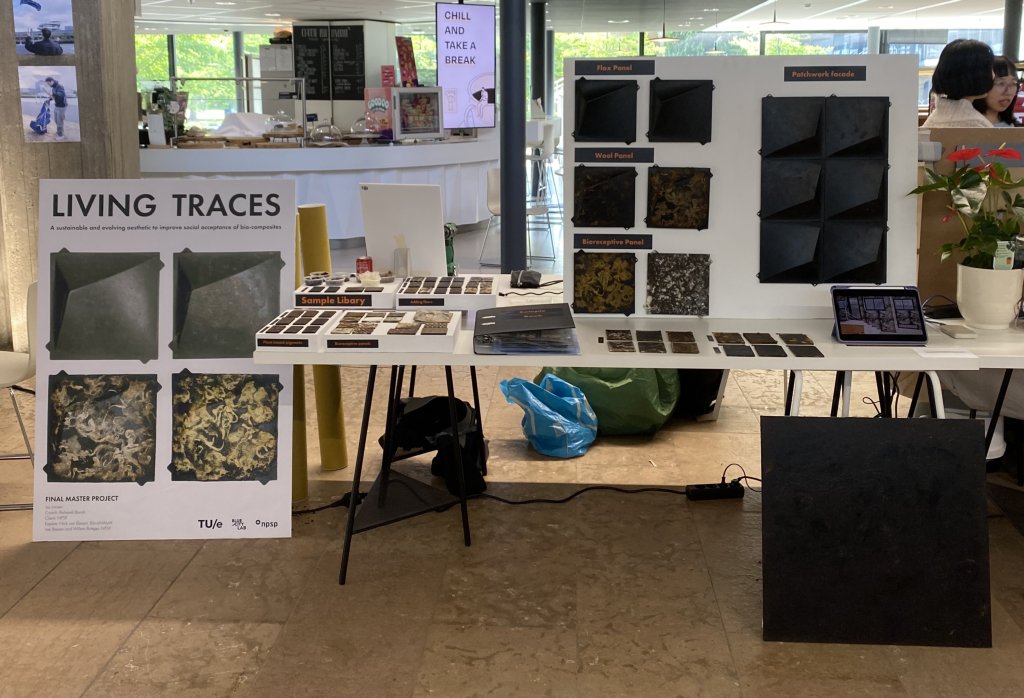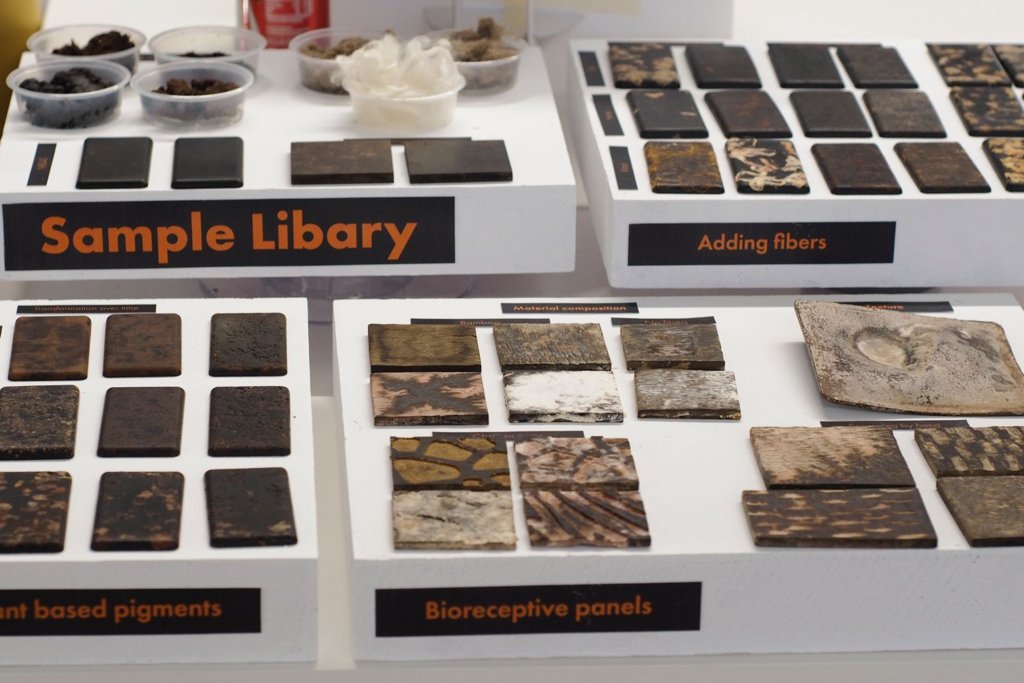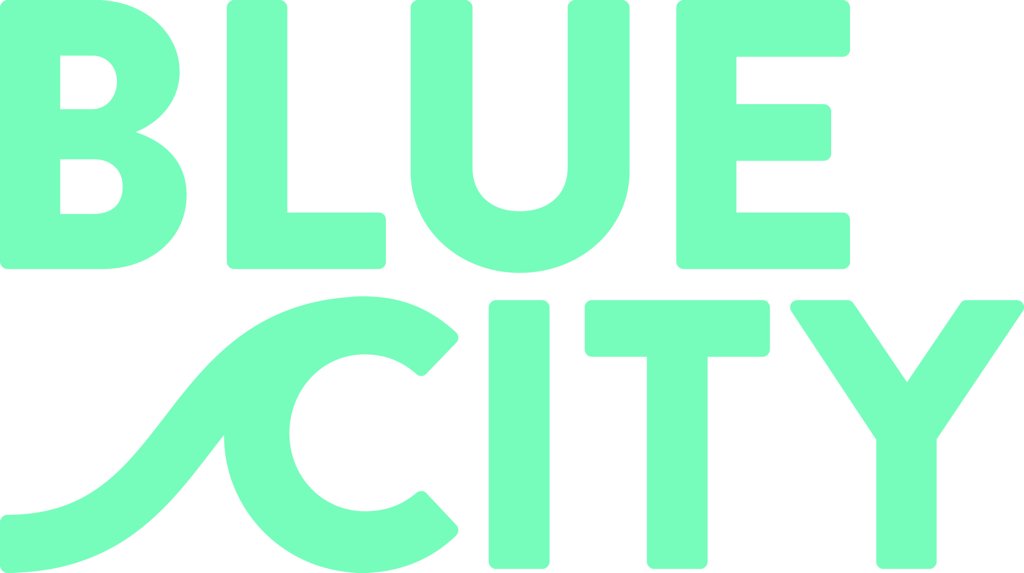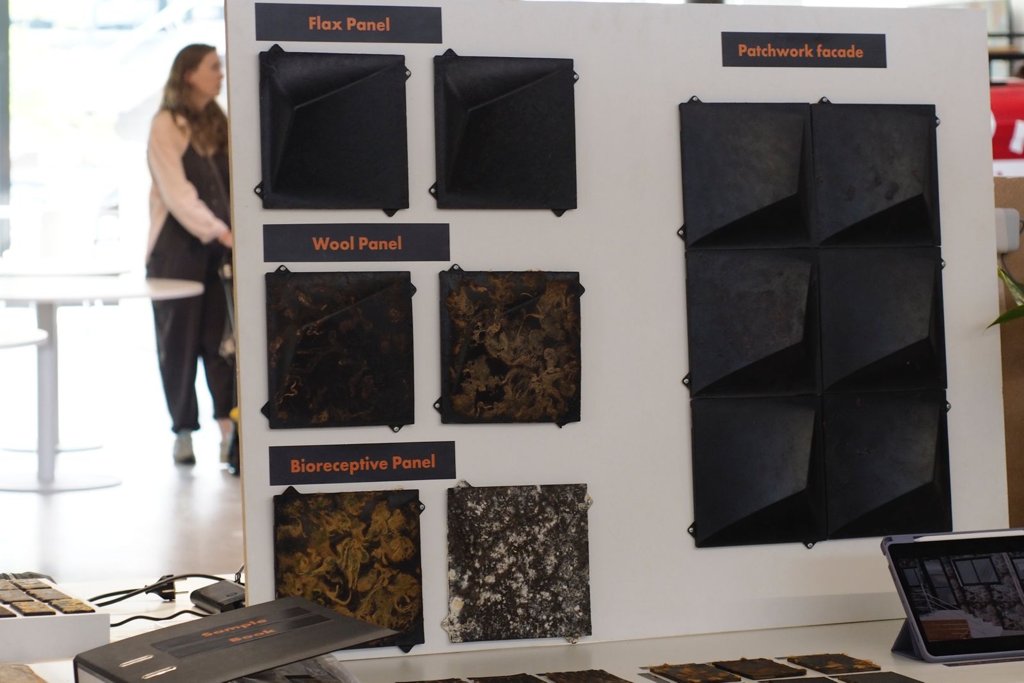The bio-composite N8040 developed by NPSP is 100% bio-based and holds great potential as a sustainable material. However, its black resin limits the possibility of incorporating pigmentation, giving it low user ratings on beauty and expected sustainability. This reflects a broader issue, as sustainable materials struggle with social acceptance because they lack desirability, fail to clearly communicate their natural origin, and are prone to decay. This conflicts with our aesthetic model where materials are expected to remain perfect and unchanged for centuries. Living Traces explores how to create an imperfect and evolving aesthetic for N8040 that conveys its sustainable nature. We ask: what if decay is not a weakness, but a design tool to create facade panels that become more interesting with time?
What if we work with decay instead of resisting it?
Direction & Editing : Marica De Michele
Director of Photography : Jurica Marković
Music : Ivna Jurković
Production Assistant : Clara Gustafsson
In Living Traces, we explore how to create an evolving aesthetic for N8040 that conveys its sustainable nature. We were inspired by natural materials like leather and wood that age with grace and collaborate with nature instead of working against it. Imperfection is implemented in the production process to create a natural aesthetic by adding fibres coloured with fungi and bio-based pigments. Practices like sandblasting, accelerated weathering, and lab experiments are used to simulate the effects of wind, moisture, UV and biological colonisation on the aesthetics of the material. This enables designers to anticipate and design for decay, leveraging it as a design opportunity. The result is a series of facade panels, one that gradually reveals flax fibres, one with wool that develops a patina over time, and two bio-receptive panels that invite algae or mycelium growth. These panels gain value over time and embrace imperfection, impermanence and transformation.
With Living Traces, we propose an alternative, evolving aesthetic for sustainable materials to improve social acceptance. Instead of resisting decay, designers can use it as a tool to design unique façade panels that gain value over time. Incorporating decay acknowledges that materials are not static, but part of a dynamic lifecycle. This approach blurs the boundaries between man-made artefacts and the natural environment and invites designers to work with natural processes instead of against them. At the same time questions remain about safety and durability for the integration of living organisms into facades. Nevertheless, Living Traces reimagines how sustainable materials are valued in our urban environment and demonstrates a future where buildings and nature evolve in harmony.
